Fishing Report: June 4, 2021
It’s license-free saltwater fishing weekend in Florida
Every Friday morning, Captain Dylan Hubbard of Hubbard's Marina joins Good Day to fill viewers in on his fishing forecast as we head into the weekend. Here is his fishing report for June 4, 2021.
MADEIRA BEACH, Fla. - Every Friday morning, Captain Dylan Hubbard of Hubbard's Marina joins Good Day to fill viewers in on his fishing forecast as we head into the weekend.
Here is his fishing report for June 4, 2021.
Inshore
Snook fishing continues to be steady around the inshore waters from the back bays to the beaches. However, it’s this time of year that the warmer weather has set in. Most of the snook fishing is best and most concentrated around the dock lights and bridge lights nearest the passes and during the day along the beautiful beaches.
However, there’s still plenty of snook to be had in the back bays around the flats, mangrove shorelines, dock lines, and even those bridges. Most of the larger more mature fish migrate to the passes and beaches and eventually near shore to spawn, but still, plenty of schoolie-sized slot fish are around the back bay waters.
The snook, redfish, and trout ban was lifted starting June 1, but keep in mind, once this was lifted it reverted back to their original size limits, bag limits, and seasons. Currently, snook season will open September 1 for three months. They must be 28 33 inches total length, and you’re allowed one per person.
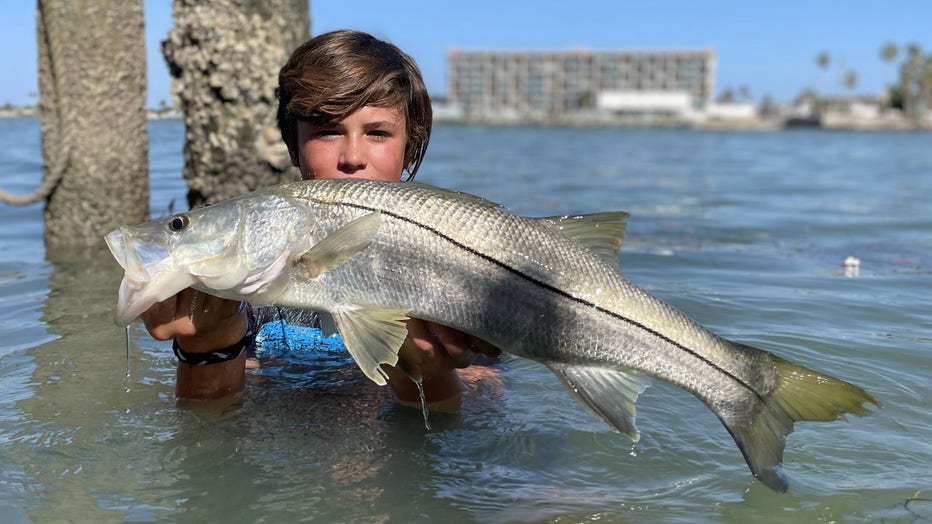
Snook (Courtesy: Capt. Dylan Hubbard)
Remember, you must also have a snook stamp on your FWC fishing license in order to harvest a snook as well. They are loving the live shrimp and mud minnows along the beaches but also the soft plastics. At night, around the bridges for live bait, live shrimp, pinfish, pigfish, or pass crabs are all great options.
If you want to target a big boy, a smaller ladyfish or mullet is a great option too, specially weighted to the bottom closer to structures. For artificials -- for the most action -- a soft plastic or swimbait is a great option, but for the bigger snook, the flair hawks or bombers are great options.
Redfish are very steady right now too around the mangrove shorelines and islands of Tampa Bay we have seen a steady redfish bite. However, the passes have been impressive with plentiful redfish too. Smaller pinfish, live shrimp, and greenbacks are all great live bait options. However, you can get them on the dead cut bait too like pinfish, threadfins, or even dead shrimp have been working around the docks of the passes.
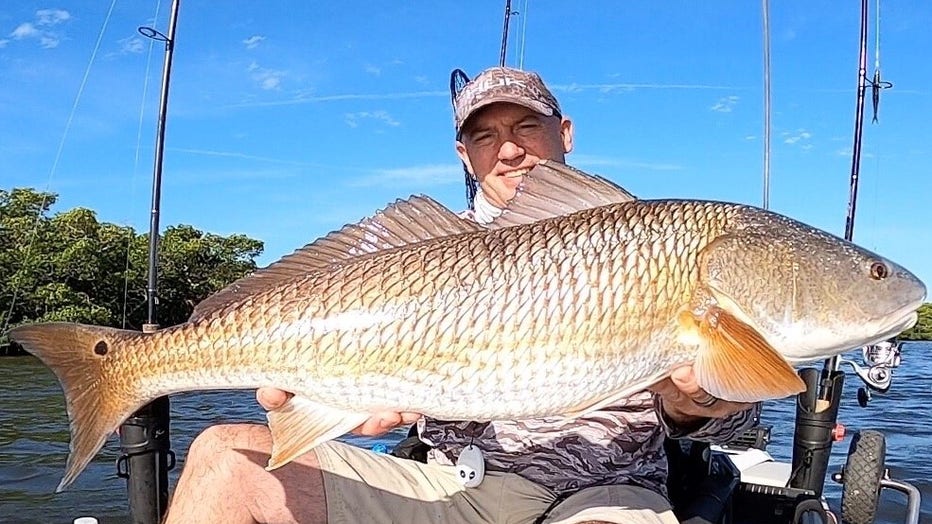
Redfish (Courtesy: Capt. Dylan Hubbard)
Soft plastics are the artificial bait of choice for the redfish but in the early morning hours and dusk around low light conditions in shallow water, some prefer the topwater plug for that explosive action. However, redfish are built to feed on the bottom, and they often will miss topwater plugs but that surface explosion is worth the rush even if you miss the fish in my opinion.
Pompano action has remained steady in the area along the beaches and around our beach fishing piers. From Pier 60 to the Cortez Fishing Pier, we have seen the pompano feeding fairly steadily.
Fort De Soto piers have been reporting nice catches of pompano too very well, especially in the earlier morning hours using live shrimp or sand fleas on the bottom. However, the pompano jigs are super popular. Even bridges and structures inland, around those sandy areas are holding pompano. We have even seen the occasional permit mixed in with the pompano.
Tarpon are rolling in the area at this time and we’re nearly reaching the peak time for these fish. They really start showing up in good numbers at the end of May and the June full moon typically marks the peak of the summertime rush of tarpon to the area.
We are seeing plenty of these fish around the passes and the mouth of Tampa Bay. However, they bring with them plentiful shark action and there has been plenty of videos already circulating of big hammerheads chasing tarpon from the Skyway to Egmont Key. Remember, if you get a big tarpon on and a large shark shows up, loosen the drag to nothing and try and keep your boat on top of the fish to give him plenty of maneuverability and cover to outmaneuver the shark. These fish are catch-and-release only so letting a big shark take it home for dinner just does not make sense.
Ladyfish, mullet, and pass crabs are a favorite bait for the tarpon, but you can also use blue crabs too. Plus, many bridge snook and grouper fisherman will hook up with tarpon when fishing larger bridges with those flair hawk jigs at night.
Trout have been slowing down but still plenty of nice fish caught lately. From the beaches to the back bays -- much like snook -- these fish are moving around heavily. We are seeing plenty of them along the beaches in the morning and around the passes too. However, a majority of the trout are up in the back bay waters hanging on the edges of flats or in the cuts, pockets or on the points of sandbars or islands where the water creates eddies for them to ambush passing baits with minimal expended efforts.
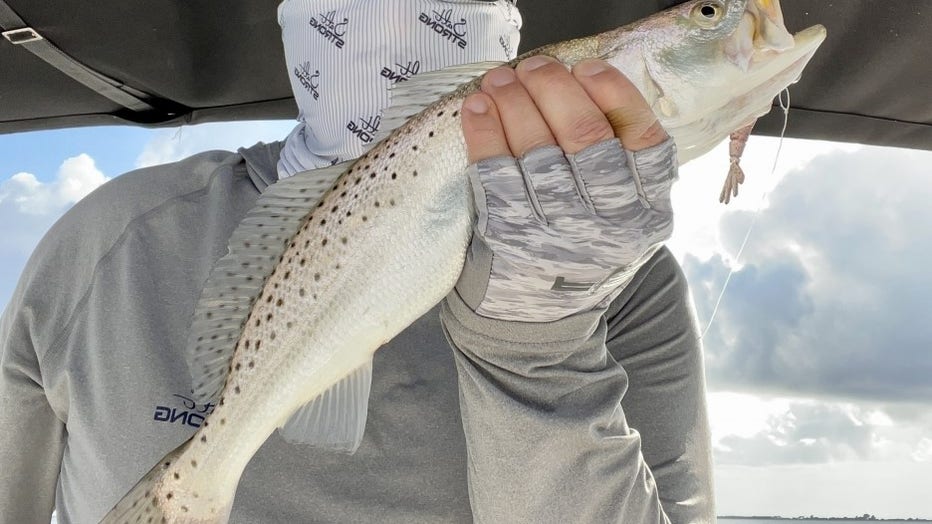
Trout (Courtesy: Capt. Dylan Hubbard)
The dock lights at night where moving water and bait is present is a great place to look for trout this time of year. Slow-moving soft plastics are a great option but the super lightweight rigs with live shrimp or greenbacks are always a great trout set up too. Remember, a slower action rod is a great idea too as they have such light mouths.
Sheepshead are still around but mostly giving way to the more aggressive and more all-around plentiful mangrove snapper this time of year. Many sheepshead retreat to the bayous and creeks this time of year but still a few around.
The mangroves are dominating inshore structures right now from bridges, to docks, to pilings, and everywhere in between including the rock piles of Tampa Bay. Smaller pieces of cut shrimp or smaller greenbacks are great options to target the inshore mangrove snapper.
Near shore and offshore
Red snapper season is upon us and that is our main target for the next 59 days while the season is only open for 62 days for the federally permitted-for-hire fleet. These charter boats and party boats hold federal fishing permits in the area.
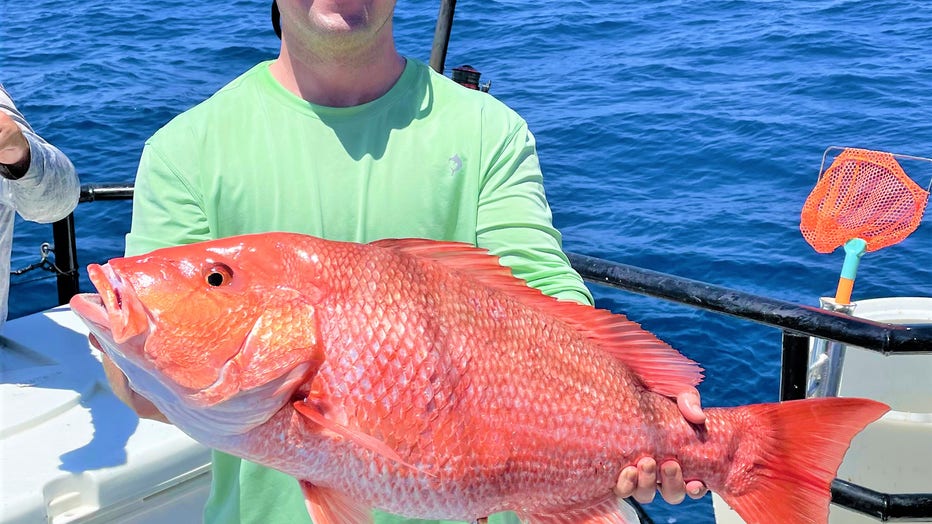
Red snapper (Courtesy: Capt. Dylan Hubbard)
Private recreational anglers have seasons starting June 4 running until July 28. Also, since the private recreational fleet is managed by FWC at the state level, they have a much more adaptive and flexible management approach compared to the more wieldy federal systems that manage the federal-for-hire fleet so often the private rec anglers will see and extend season with extra weekends opened up in the fall if their quota isn’t full.
It’s super important to ensure you have your Gulf Reef Fish Survey endorsement on your fishing license if you are a private recreational angler or diver fishing from a private boat anywhere in Florida who:
- Intends to harvest
- Attempts to harvest
- Possesses one or more of the following reef fish species: mutton snapper, yellowtail snapper, hogfish, red snapper, vermilion snapper, gag grouper, red grouper, black grouper, greater amberjack, lesser amberjack, banded rudderfish, almaco jack, gray triggerfish, gag grouper, red grouper, scamp grouper, mangrove snapper, lane snapper, kingfish, tuna, or mahi mahi.
LINK: Here’s all the information and more on that program and how you can sign up
There’s a huge reason to be involved because this is how they more accurately account for the universe of anglers involved in the offshore fishery for private recreational anglers in Florida. We have nearly 44% of the biomass of red snapper along the coast of Florida for red snapper and we make up nearly 60% or a little more of the recreational fishing effort for this species across the Gulf.
There is a huge need to have a better grip on exactly how many are out there fishing for this species and to ensure that there are proper estimates being used instead of more subjective guesswork to compile the total number of anglers.
Two things make up the quota being filled for the total number of effort, or a number of anglers on the water and then their landings, which are randomly sampled through a new FES survey or fishing effort survey. This is done now through a mail-in survey that is mailed to homes using addresses from the fishing license database, according to those signed up in this survey. Think of how many buy fishing licenses at Walmart and how many times all the ‘free’ checkboxes get checked off when, in reality, very few of those people will ever intend to harvest, attempt to harvest, or possess on the species above in the list from a private recreational boat.
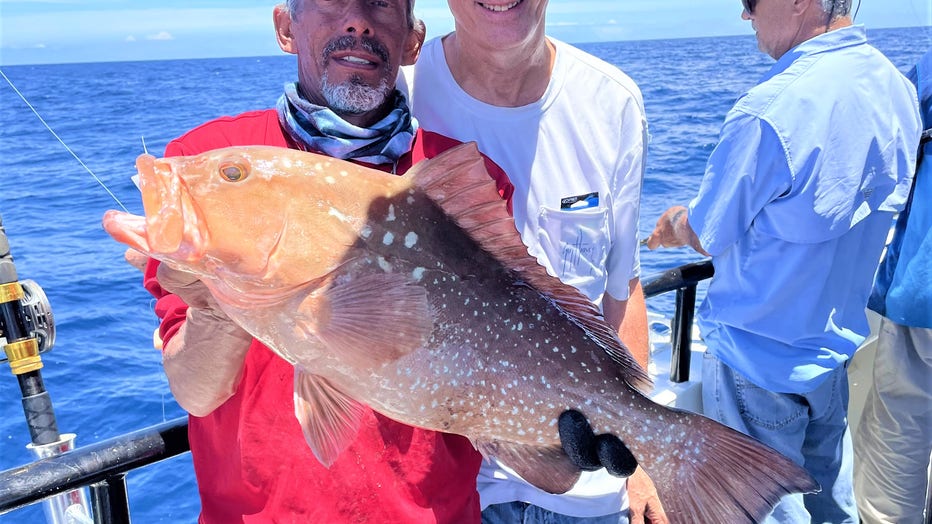
Red snapper (Courtesy: Capt. Dylan Hubbard)
Keep in mind this does not include when you fish on a federal-for-hire boat, like a charter boat or party boat such as ours at Hubbard’s Marina. That is a huge number of anglers included as effort in the fishery that should not be. This is why I believe this should be a very minimal cost endorsement to avoid the box being checked without consideration when procuring a fishing license online or at your local Walmart.
Plus, keep in mind the importance of dead discards and discard mortality. How many do you know right now that are all for catching and releasing snook, redfish, and trout but will be the first in line to kill a mangrove snapper, gag grouper, or red snapper?
Plus, that same person inshore will hold their breath and wet their hands before handling a breeder snook will go offshore and then cull through 20 red snapper. They’ll do this before keeping their two red snapper they deem large enough to fill their two-fish bag limit while the other 18 they released will often end up suffering fatal damage if not properly descended or vented? Please help us to spread the word on the importance of descending or venting your released fish --also, the importance of catching your quota and moving off those fish. It is fairly easy to tell a red snapper show from a grouper show offshore by looking at your bottom machine.
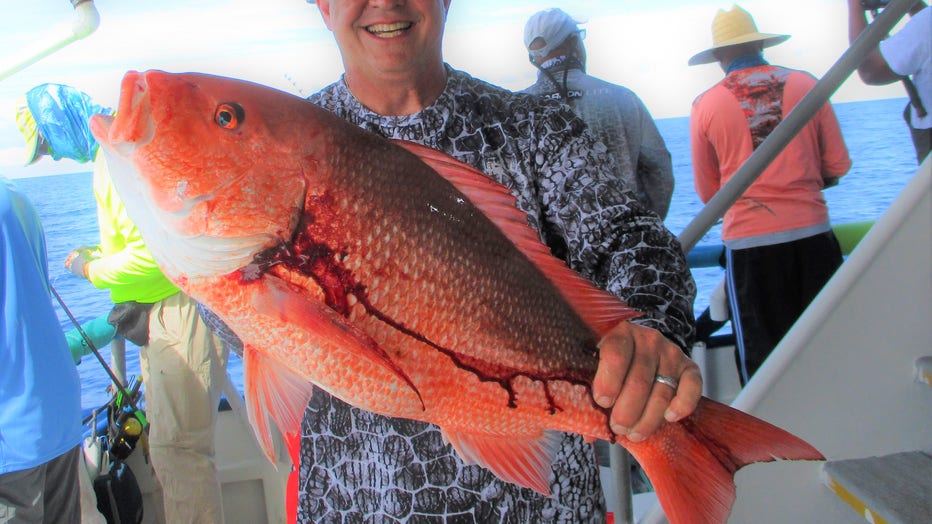
Red snapper (Courtesy: Capt. Dylan Hubbard)
If you got four guys out on the boat, you’re allowed eight red snapper. Go get those fish, move off them and hunt for gags and mangroves. No need to stay on ‘em for another three hours longer trying to catch the one trophy fish to take your Instagram photo with. If you insist on doing so, please make sure to treat it like that breeder snook inshore and minimize the time it takes you to get him from the bottom to the boat using heavier proper tackle, not a spinning reel.
Then, once onboard, minimize the time out of the water. Then use a proper dehooking tool and then, for the love of God, use a descending device or venting tool PROPERLY to ensure that fish has a chance to live another day.
LINK: Here’s all the information and more on barotrauma and how to mitigate that fatal damage to your future offshore catch
**Note: I recommend the Salt Strong articles at the bottom of the page under ‘webpages.’ I helped them develop those personally.
There is so much more I could go on and on about here, but I want to keep this as short as possible and not get on too much a diatribe in this week’s fishing report.
Gag grouper is also open now and since we are fishing deeper for those red snapper, we are running across some big gag grouper on our offshore ledges, wrecks, springs and peaks. The big live baits are working best for the gag grouper on heavier tackle.
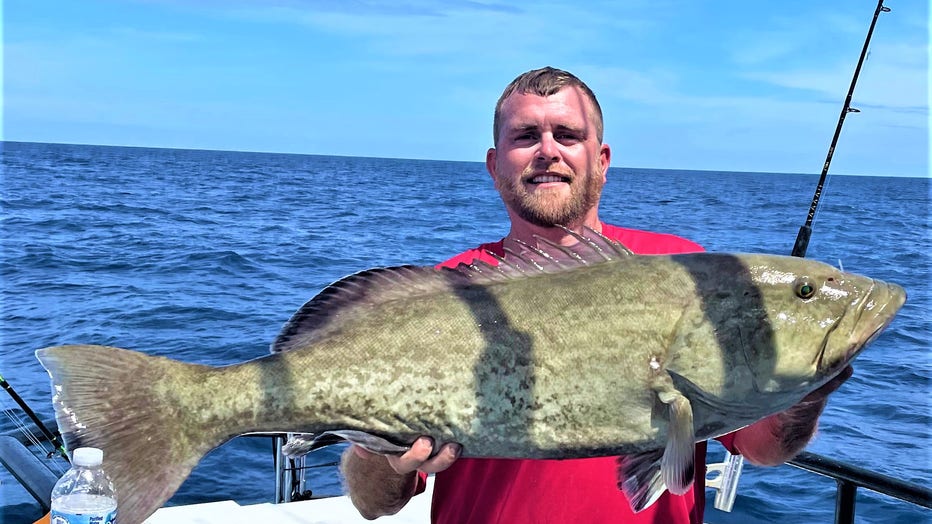
Gag grouper (Courtesy: Capt. Dylan Hubbard)
The red snapper are taking not only live baits but are loving the bigger chunks of dead bait and even the vertical jigs too.
Red grouper action is also mixed in out deep this time of year. Since everyone’s main focus right now is red snapper most, they are fishing around 120 feet and beyond around those potholes, big peaks, wrecks, and springs. Around those areas come big bait shows and this time of the year, those big red grouper love hunting and moving with the plentiful bait shows.
Big pieces of bonita strips, octopus tentacles, or large dead threadfins with the tails trimmed are great options to send down for the red grouper if you can make it past the plentiful and aggressive red snapper.
Scamp grouper action is also mixed in here with the other grouper species while fishing deep in the summer for red snapper. They are loving the smaller hand-sized or less pinfish and the diamond jigs bounced along the bottom.
Mangrove snapper have been large and overall plentiful, but the red snapper we’re targeting this time of year will often be much more aggressive and plentiful in comparison. So often in the summertime, mangrove snapper catches will pale in comparison to the cooler months when the mangroves are our staple species.
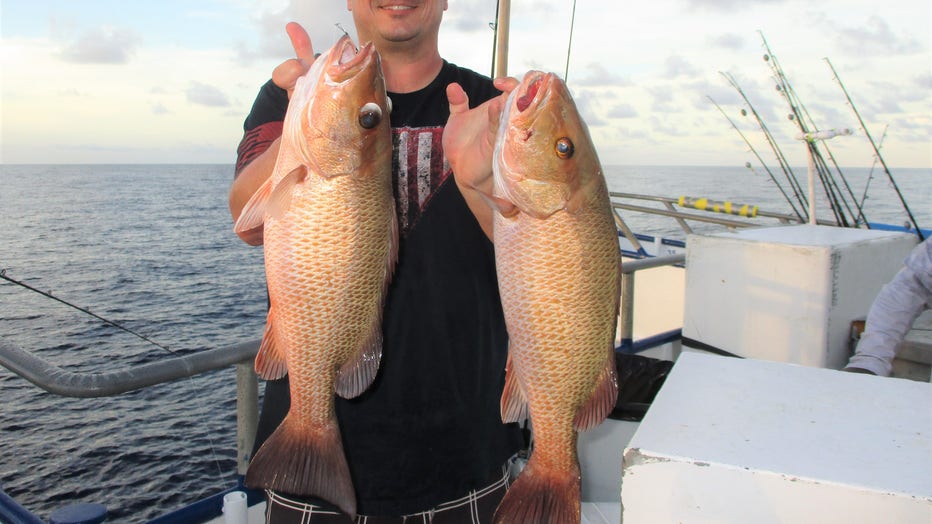
Mangrove snapper (Courtesy: Capt. Dylan Hubbard)
Even though they are typically more aggressive and prolific in the summer, we just have such a short ARS season that we hone into those fish at deeper depths and will often fall short on the mangroves due to that.
Pelagic action has remained active in our near shore and offshore waters. We are still seeing a few kingfish near shore but most of those fish have moved offshore where the water will remain cooler through the summer. The blackfin tuna action has been really decent out there in the offshore waters where you can find in them in larger concentrations.
We are also seeing the mahi mahi coming into the area in force as of late too. We even are seeing them ash shallow as around 40 feet of water on our half-day fishing trips. However, we see the bigger more plentiful schools and fish out deeper beyond around 120 feet and deeper.
TERMS OF REFERENCE:
INSHORE – from the back bays out to the bridges and including right on the beaches
NEAR SHORE – From the beaches out to 20 miles, or up to 100ft of water
OFFSHORE – from 20 miles or 100ft and beyond

